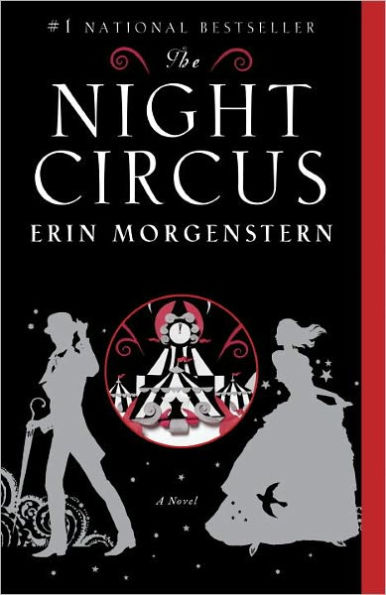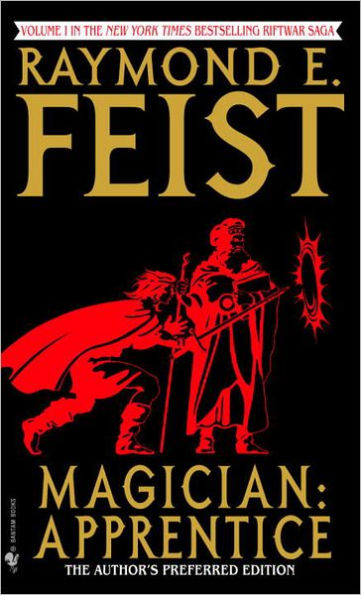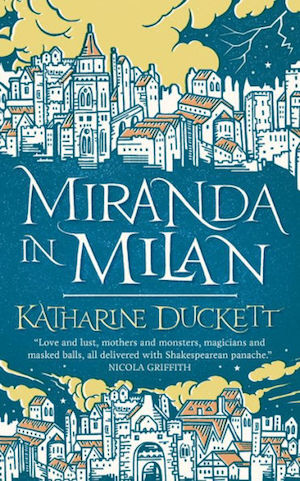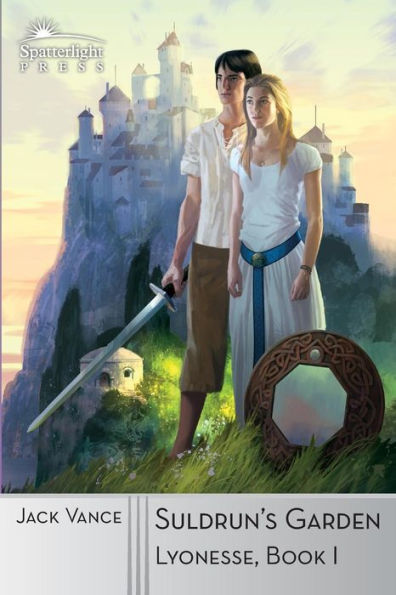Dark fantasy is great, but sometimes (and especially during times of stress and uncertainty) we want something that’s more… optimistic. Just a little, at least! We’ve gathered 17 of our favorite brighter fantasies below, but be sure to add your own picks in the comments!
The Goblin Emperor—Katherine Addison
Katherine Addison’s delightful novel is about many things, but at its (lovable) heart it’s a story about realizing that sometimes your quirks are your greatest strengths. Maia, half-elven, half-goblin, becomes Emperor when his father and three elder brothers are assassinated. He has to learn how to rule a distrustful kingdom while he investigates the murder, navigates the byzantine politics of his (primarily Elven) court, and, hardest of all, stays true to himself. The story doesn’t shy away from the horrors of executions or the ugliness of prejudice, but it also focuses on the power of compassion to bridge social differences and effect change.
Buy the Book


The Goblin Emperor
The Face in the Frost—John Bellairs
A wizard named Prospero (not that one) teams up with his old friend, the adventurer Roger Bacon (OK, maybe that one), to confront an evil power attacking their kingdom. They know going into the fight that they’re outmatched, but what else can they do? Bellairs’ story, like all of his work, juggles truly effective horror with quirky humor. The book gives weight to both elements, owning up to the terror that would come with a fight against evil, but also never wallowing in that terror to the point of overwhelming the humanity of the book.
Buy the Book


The Face in the Frost
The House in the Cerulean Sea—TJ Klune
Linus Baker is proud to be an agent of the Department in Charge of Magical Youth. He follows the rules. He believes in bureaucracy. If there is book to be by, he is by it. And when a directive comes down from Extremely Upper Management that he is to go and investigate the Marsyas Island Orphanage—a home to six of the most dangerous magical children on record—he sets off determined to do his best, even if it’s hard.
Does “his best” mean condemning the children? Can he report them back to DICOMY when they include a teen boy who transforms into a small, shivery dog when he’s startled? What about the indistinct blob of uncertain parentage, whose life’s dream is to become a bellhop? What about the wyvern??? And what about Arthur Parnassus, the children’s devoted (and, if Linus is being honest, rather charming) guardian? Is there any way for Linus to reconcile the joys of middle management with the stirrings of his heart?
Buy the Book


The House in the Cerulean Sea
The Night Circus—Erin Morgenstern
The circus arrives without warning. And with it, too, comes the most beautiful magic. Morgenstern’s modern classic story begins with the white and black striped tents of Le Cirque de Rêves, a traveling show that opens only at night and travels all throughout the world bringing experiences and illusions to its patrons. Except they aren’t really illusions — the circus is powered by magicians, who have been unknowingly locked in a deadly competition since they were children.
What unfolds is a tremendous love story with lives at stake. Magicians Celia Bowen and Marco Alisdair hold the circus’ well-being in their hands like a tiny bird, each manipulating and creating magic, each trying to out-do each other. Here’s the thing: it does get dark. Being magically bound in a competition that only ends with a death is not a great situation to be in for two young lovers. But what The Night Circus provides is the hope that past mistakes can be mended, that the old rules can be broken to make way for a better system, and that magic and love can power an entire circus for centuries and centuries on.
Buy the Book


The Night Circus
The Copper Promise—Jen Williams
Williams’ novel combines some of the tropes of grimdark, e.g. mercenaries, torture, and tragic backstories, with some of the higher ideals of sword and sorcery. Best of all, it treats what could have been a slog through brutal battles as a lighthearted adventure. This bright tone, combined with a biting sense of humor, make the book fun as well as epic. The fallen knight is more complicated than we think, the swordswoman-for-hire is as handy with snark as she is with a sword, and… what’s this? The main character’s arc is one of rediscovering his humanity after a horrible trauma, rather than a slow degradation into despair? Is it possible?
Buy the Book


The Copper Promise
Riftwar Series—Raymond E. Feist
Several denizens of Twitter suggested Feist’s work as an antidote to grit! The central conceit of the Riftwar books are the rifts themselves—they can join worlds, but those who travel through them can seek communication and exploration, or war and conquest, and the series explores many permutations of these choices. Sure, it has has war right there in the name, but it also has characters who are willing to sacrifice themselves for the greater good, who take chances on trusting each other (and have that trust rewarded), rulers who choose mercy over murder, and candidates for the throne who abdicate so that better people can lead. We’re a long way from Westeros when we’re reading Feist.
Buy the Book


Magician: Apprentice
Shannara Series—Terry Brooks
These are more high fantasy style, involving hero quests in addition to mundane acts of heroism. As he says in his 2003 book Sometimes the Magic Works, his “protagonists are cut from the same bolt of cloth as Bilbo and Frodo Baggins. It was Tolkien’s genius to reinvent the traditional epic fantasy by making the central character neither God nor hero, but a simple man in search of a way to do the right thing….I was impressed enough by how it had changed the face of epic fantasy that I never gave a second thought to not using it as the cornerstone of my own writing.”
Buy the Book


The Sword of Shannara
Chrestomanci Series—Diana Wynne Jones
All of Diana Wynne Jones’ books could be on this list, but we’ll stick with the Chrestomanci Series, and particularly, The Lives of Christopher Chant. People die, parents split up, and villainous uncles trick nephews into nefarious schemes, but Wynne Jones still gives us characters to root for and dashes of hope. Christopher Chant himself is good-hearted (occasionally bitchy, but good-hearted), going out of his way to help a young goddess, and forging a friendship with the awesomely-named Throgmorten the Cat.
Buy the Book


The Lives of Christopher Chant
The Sun, the Moon, and the Stars—Steven Brust
Brust’s novel is about a painter creating oil paintings and putting an art show together. It’s also a retelling of the Hungarian tale of Taltos, who uses expert-level trickster skills to con the sun, moon, and stars away from the monsters who own them. The stories parallel each other in fascinating ways, but much of the weight is given to the modern story of a person who is part of both an artistic community and a supportive relationship. This allows the book to work as an inspiring tale of the value of art, rather than just another quirky fairytale mashup.
Buy the Book


The Sun, the Moon, and the Stars
Range of Ghosts—Elizabeth Bear
Range of Ghosts, the first book in Bear’s Eternal Sky trilogy, gives us an epic fantasy world influenced by Central Asian culture. Temur, a grandson of the Great Khagan, and Samarkar, the former princess of the Rasa dynasty who abdicated her royalty to become a wizard, must stand together against the hidden cult that has caused civil war throughout the empires of the Celadon Highway. While this is a complex book, with layers of religious tradition and political intrigue, Bear also focuses on the characters at the story’s center, and, as Liz Bourke said in her review, “the significance of a single life, united with other single lives,” and “moments of kindness and stillness amidst the horror of war,” creating an epic with a beating, human heart.
Buy the Book


Range of Ghosts
The Dragon’s Path—Daniel Abraham
The Dragon’s Path is epic fantasy that picks up after the dragons have gone, leaving behind thirteen races who were bred to serve them. Now those races squabble and war with each other as they try to map an economy and political destiny. While there is a lot of page-time spent on pseudo-Renaissance banking systems, Abraham also takes the time to give us several point-of-view characters that enrich the story with humanity. He chooses to focus on a higher-class couple who would probably be the villains in most books, but here are made worthy of empathy.
Buy the Book


The Dragon’s Path
Miranda in Milan—Katharine Duckett
With Miranda in Milan, Katharine Duckett gives us a sequel to Shakespeare’s Tempest that is both more optimistic, and, somehow, even more queer than the Bard’s original. Miranda is doing her best to create a new life for herself in Milan, but the locals treat her like a monster, the family castles seems more a prison than a home, and her father—of course!—has secreted himself away in the depths of the castle to work his forbidden magic. He expects Miranda to dance, a puppet on his string. And at first she focuses on the future, marrying Prince Ferdinand before his family, and ruling Naples beside him. She must learn the ways of Italy and prepare to be Queen.
But the more time she spends in Milan the more of her father’s lies she uncovers. And the longer she lives in Milan, the more often she finds herself gazing at Dorothea, a Moroccan magician who is her only friend and ally. But is there magic enough in this brave new world to allow two women to spurn society and declare their love?
Buy the Book


Miranda in Milan
Little, Big—John Crowley
Little, Big unfolds over nearly a century, as the Drinkwater clan builds an intricate relationship with the world of faerie. We meet the human family, hear rumors of magical beings, visit a dystopian City, and spend some time with a Grandfather Trout who might be a cursed prince. Crowley isn’t afraid to slow down and ponder heady subjects like free will and fate, or to tell his story through intricate detail and gorgeous language, which led to a novel that Ursula le Guin said, “…all by itself calls for a redefinition of fantasy,” and Thomas Disch called “the best fantasy novel ever. Period.”
Buy the Book


Little, Big
Lyonesse Trilogy—Jack Vance
This trilogy melds Arthurian stories, chivalric tropes, and Celtic mythology into a story of a despotic king, his daughter, and her lover. Since Vance took elements from several different medieval periods and used those elements to bring life to his own magical lands, he can play around with references to stories and echoes of themes, such as the fall of Atlantis, without being tied to an expected narrative. While the story itself is not exactly lighthearted, it does feature plenty of humor, fun, and romance. He also uses the Atlantean references to tinge the whole story with melancholy—how long can Lyonesse last? Does the possibility of the Kingdom’s end overshadow the joy that can be had in the moment?
Buy the Book


Suldrun's Garden
Silver in the Wood—Emily Tesh
I will never stop singing the praises of this book, because it is a very specific dream of mine: enchanted forest? Check. Sassy dryad friend? Check. Extremely tall and hot man who lives as steward of said enchanted forest? HELLA CHECK. Who doesn’t want to live in that world for a while? And with the sequel, Drowned Country, coming in June, you’ll have even more of this world to get lost in.
At the heart of Emily Tesh’s novella is a love story: folklorist Henry Silver comes to Greenhollow forest chasing a myth; the myth of a man who haunts and keeps the Wood. He finds Tobias Finch (the aforementioned “tall and hot”), and a romance blossoms. As happens to all of us, sins of the past arise to screw it all up, but Tesh manages to weave a tale that is stunning to read. It’s a book that feels like radiant sunlight piercing through a dense ceiling of tree branches, and will leave you aching for a forest of your own. And maybe a hot lover to spend eternity with too.
Buy the Book


Silver in the Wood
The Innkeeper’s Song—Peter S. Beagle
We talk about The Last Unicorn a lot on this site, because The Last Unicorn is fucking awesome. But! Peter S. Beagle did so much more! So when a Twitterer mentioned Beagle’s work, I decided to highlight The Innkeeper’s Song. Beagle jumps across multiple points of view to weave several different quests together. Tikat pursues his childhood love, whom he saw resurrected by magicians. Lal and Nyateneri, the magicians, are racing to save their old mentor from his powerful but evil student. Lukassa, the resurrected girl, has her own path to pursue. And the Innkeeper himself must take them all in, even though he knows they bring trouble with them. Through nested quests and elegant language, Beagle tries to get to the heart of death, love, and duty.
Buy the Book


The Innkeeper's Song
The Curse of Chalion Series—Lois McMaster Bujold
This series is a melding of fantasy and theology informed by elements of medieval Spanish history and mysticism, especially the reign of Ferdinand and Isabella in the late 15th Century. The Curse of Chalion follows Lupe dy Cazaril, who returns home after war and enslavement to try to live a quiet life, but instead finds himself working to lift the curse that lays on the royal family that has acted as his patron. A little bit epic, a little bit slice of (imaginary, alternate universe) life, the series takes questions of morality and duty seriously, without succumbing to endless bouts of violence or despair.
Buy the Book


The Curse of Chalion
So, this is our list, but we’re sure there are more upbeat fantasies out there—give us your suggestions! Do you want some light to cut through the darkness, or are do you prefer your fantasy as gritty as possible?
An earlier version of this post published in April 2014.










